MARKET DRAYTON, SHROPSHIRE
Grid Ref: SJ 669 343
12 July 2002, 18 October 2003, 26 March 2012 & 29 July 2021
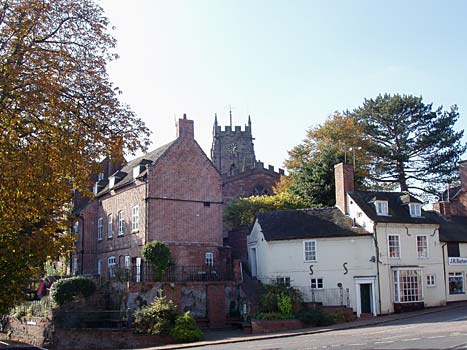 |
|
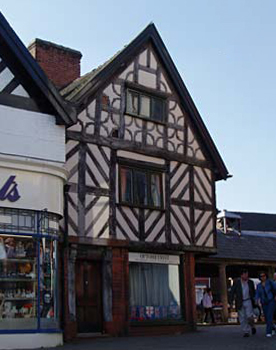 |
| View from east of the church |
|
Half-timbered building dating from 1664 |
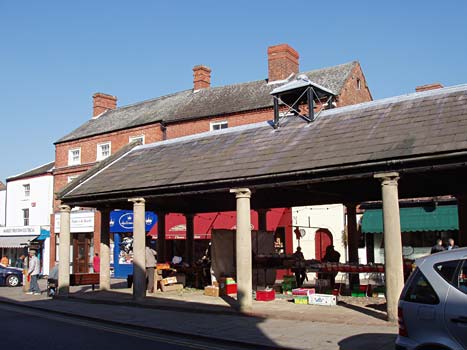 |
|
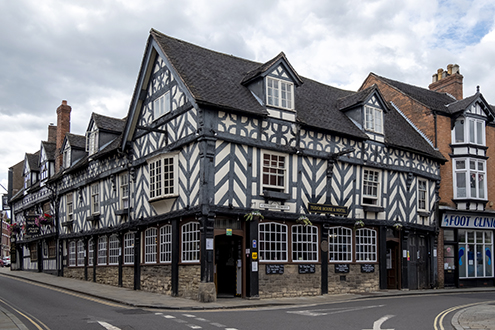 |
| Butter Cross |
|
Tudor House Hotel, 2021 |
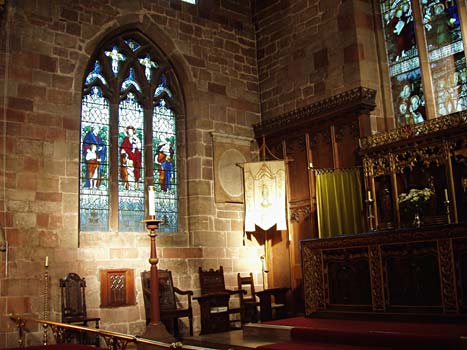 |
|
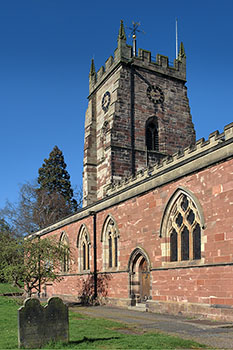 |
| A shaft of sunlight on the banner in the sanctuary |
|
St. Mary's in 2012 |
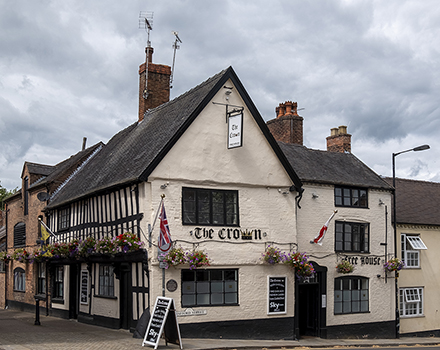 |
|
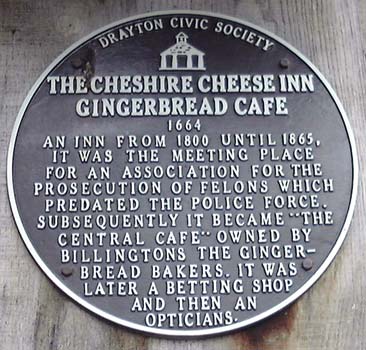 |
| The Crown Inn in 2021 |
|
Plaque near the Butter Cross |
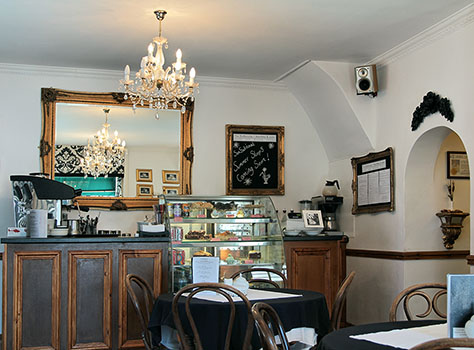 |
|
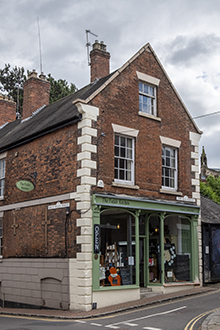 |
| The nearby tea-room has gingerbread in the toursist season |
|
Fields Kitchen on Church Street, 2021 |
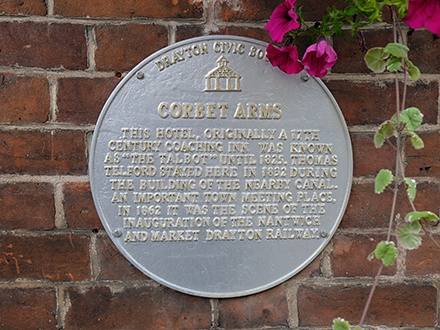 |
|
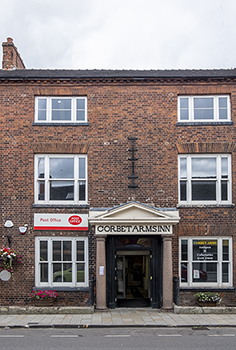 |
| Plaque on Corbet Arms |
|
The former Corbet Arms in 2021 |
Market Drayton is the sort of town I hope to find when "in
search of England". It is compact but full of history and takes a pride
in it. There are numerous notices erected by the Drayton Civic Society to
direct the attention of visitors to historic buildings. Pause awhile here,
tour the town and have refreshments at the cafe by the Butter Cross. There
was a Saxon settlement mentioned in the Domesday Book as Draitune. The town
received its market charter in the time of Henry III (1216-1272). In the last
200 years it has been noted for its production of gingerbread.
The Crown Inn survived a major fire in the town in 1651. Charles
I is reputed to have stayed here during the Civil War. The half-timbered building
on the corner of the Butter Cross shown top right, was formerly a meeting
place for a Society for the Prosecution of Felons. Such societies flourished
in the 18th and early 19th century before there was a police force or prosecution
service. Citizens banded together to protect their property, to give chase
when there was a theft, and to bring private prosecutions against those they
apprehended.
The Corbet Arms was formerly a 17th century coaching house and
was called The Talbot until 1825. Thomas Telford, the engineer, stayed at
the inn in 1832 during the building of the Shropshire Union canal. In 1862
it was the site of a meeting to inaugurate the Nantwich and Market Drayton
Railway.
Just south of the church is the brick-built St. Mary's Hall,
which was the site of a Grammar School founded in 1555 by Sir Rowland Hill,
the first Protestant Lord Mayor of London, following the Reformation. One
of the pupils was Robert Clive, 1st Lord Clive (Clive of India) - Market Drayton's
most famous son.
St. Mary's church has a Norman doorway at the west end under
the tower, dating from the middle of the 12th century. The tower itself is
from about 1325 except the battlements added in the 16th century and the pinnacles
which are Victorian. There is also masonry from the 14th century in the north
aisle and chancel. The clerestory windows are believed to be part of the 1786
restoration and the church underwent further restoration in 1884 when the
14th century aisles were repaired.
Several stained glass windows are by Kempe including the great
east window which shows scenes from the Resurrection. To the south of the
chancel is the Resurrection Chapel, furnished and panelled after the Great
War. To the north of the chancel is the Buntingsdale Chapel associated with
the families that owned Buntingsdale Hall - variously the Mackworths and Tayleurs.
In the choir vestry is a monument to Thomas and Elizabeth Bulkeley, whose
grandson Rev. Peter (1585-1653) was a founder of the town of Concord, Massachusetts
- the town where the American War of Independence began with "the shot
that echoed around the world". In the sanctuary is a brass commemorating
Rowland Corbet who died in 1560. This family held the manor and were patrons
of the church.
A correspondent, John McEwen of Wingham in Ontario, who traces
his descent from Thomas and Elizabeth Bulkelely, points out that Thomas Bulkeley's
cousin was Sir Rowland Hill, Lord Mayor of London in 1549. He quotes different
dates for Peter Bulkeley of 1582/3 to 1658/9
There is a board displaying the list of 40 vicars since 1136.
On average they must have served about 20 years each. The first on the list
is named simply as Robert, Priest of Dreiton as this was a time when hereditary
surnames were not fully established. In 1152 there was John Fitz (son of)
Thomas followed by two men who are given only Christian names - Philip and
Robert. In 1300 we have the first incumbent with a more recognisable surname
based on his abode or place of origin in Walter de Pettynges.
Sources:
The Old Parish Churches of Shropshire Churches, by Mike Salter, Folly
Publications, 2001, ISBN 1-871731-47-X
Welcome to St. Mary's Church, Market Drayton, a pamphlet available
in the church.











